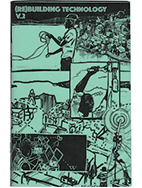10 COMMUNITY NETWORK LESSONS
Based on the successes and lessons of our projects and partner projects, we offer the following suggestions:
Community networks should be led and built by the people they intend to serve. Too often outsiders initiate projects to help a local community build a network. Outsiders can serve as supplemental technical support, or provide other expertise, but should not initiate or lead a project.
Begin projects with open, participatory community meetings, where everyone can be involved in the initial planning and learning. Shared ownership and responsibility are best built from the first moments of a project.
Focus on the community process at least as much as the end result. The promise of community networks is only met when they are actually built and governed using an inclusive process. How are users becoming leaders or experts? How are people engaged in the decision making process?
Are you providing a service (as an internet service provider), or organizing people to build infrastructure? Either model is valid, but it is best to be clear about the goal, and establish your organization and strategy accordingly.
Choose the simplest technology or even non-tech solution to get the job done. For example, a lot of energy in community wireless has been dedicated to creating open source mesh firmware; however, in some cases a simple point-to-multipoint network will be more resilient and easier for people to understand. Similarly, a community radio station, an outdoor bulletin board, or two-way radio system may fit the need better.
Be sure the project is not technology in search of a problem. A network should not be the goal–but a means to an end. It should be clear that the project serves a critical need articulated by the people most impacted. It is easy for people to get caught up in new technology and never get to the point where the technology is serving its intended function.
Incorporate art, media, music and storytelling. Content is at least as important as the network infrastructure, especially for drawing diverse people into the process and keeping them engaged.
Involve other groups, organizations, and movements even if they seem unrelated. Using a shared visual language and participatory planning process can help involve a wide range of groups.
Invite kids to everything. Similarly, make sure community elders can participate, provide input, and give feedback. Ensuring that the process is accessible to everyone strengthens the project.
Make sure there is a cycle of learning and teaching included in every aspect of the project. Learners becoming teachers will help ensure sustainability.
Authors: Ryan Gerety, Andy Gunn, and Diana Nucera

